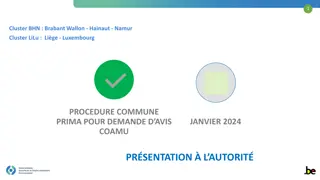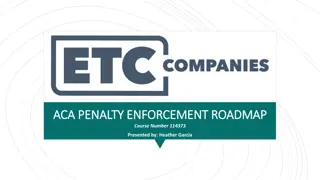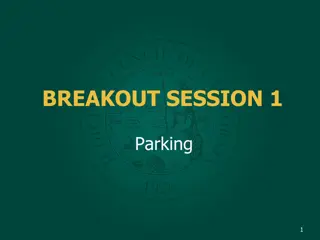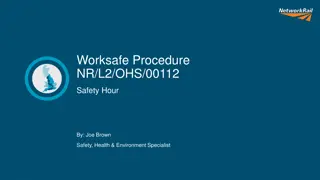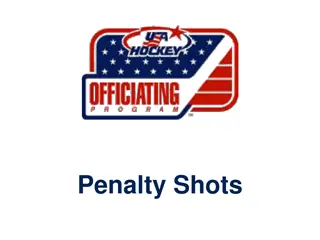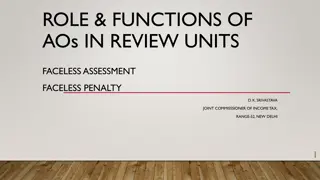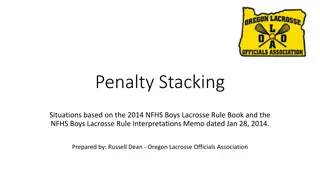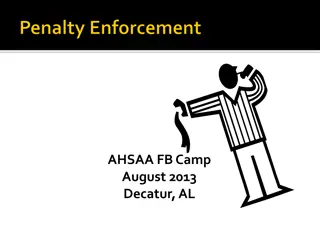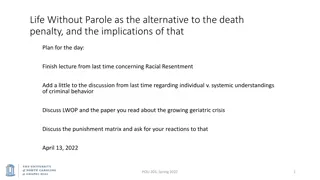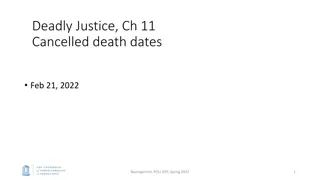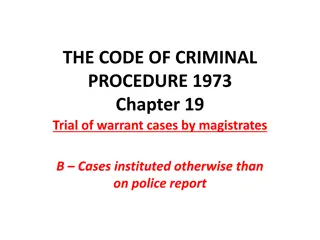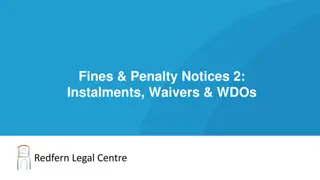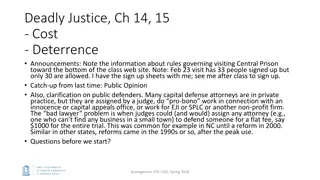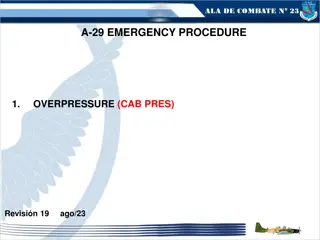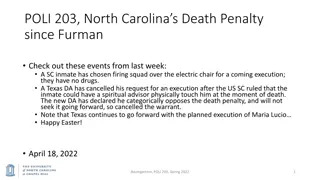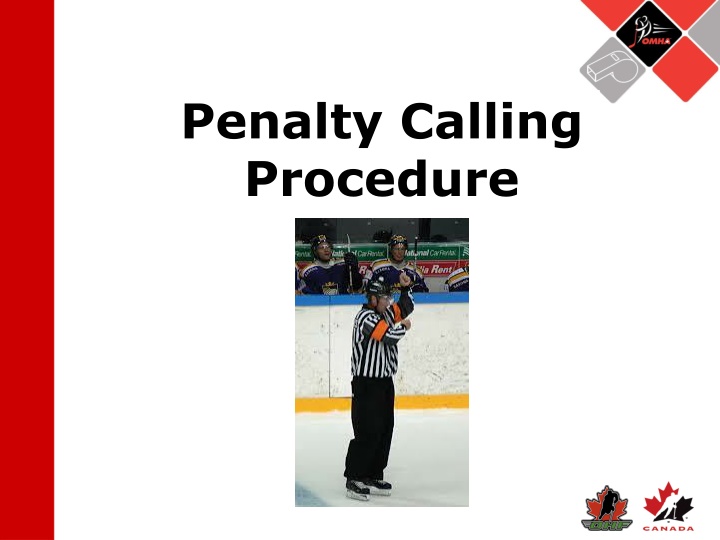
Effective Penalty Calling Procedures and Communication Guidelines
Enhance your understanding of penalty calling procedures in sports with these detailed steps and communication tips. Learn how to signal penalties, interact with players, and maintain professionalism during the process.
Download Presentation

Please find below an Image/Link to download the presentation.
The content on the website is provided AS IS for your information and personal use only. It may not be sold, licensed, or shared on other websites without obtaining consent from the author. If you encounter any issues during the download, it is possible that the publisher has removed the file from their server.
You are allowed to download the files provided on this website for personal or commercial use, subject to the condition that they are used lawfully. All files are the property of their respective owners.
The content on the website is provided AS IS for your information and personal use only. It may not be sold, licensed, or shared on other websites without obtaining consent from the author.
E N D
Presentation Transcript
Penalty Calling Procedure
Procedures Mentally record offending player s number Raise non-whistle arm (straight up, hand open, fingers together) Whistle not in mouth Blow whistle (WITH AUTHORITY) when offending team has possession and control of puck Come to complete stop as whistle blown with arm extended
Procedures Pause to allow everyone to focus on referee Lower signal arm and point toward offending player; do not use one finger point Call out player s #, team, colour and infraction clear, calm, assertive voice Give signal for infraction and report penalty at penalty box; remain clear of penalized player
Procedures Report #, team colour, infraction and duration to timekeeper Keep all players in view Signal infraction at penalty box area Leave penalty box area remaining clear of penalized player(s)
Verbal Communication Use calm, clear voice with neutral tone Do not include unnecessary words Do not get personal or engage in reverse abuse
Penalty Calling Tips Know procedure well Be professional, not emotional Come to complete stop and make distinct pause after whistle Treat disrespect with respect Adjust route to penalty box to avoid confrontations Make eye contact with timekeeper Not mandatory to stop if timekeeper well qualified and simple situation
Signals Delayed penalty signal arm straight up, hand open, fingers together Rotate raised arm down to point to penalized player(s) Point with open hand (fingers together) Do not point if player is too close (3metres) Signal each infraction Signal clearly and deliberately
QUIZ 1. When assessing penalties to multiple players you must signal each penalty. TRUE 2. Identify the player by pointing with one finger. FALSE 3. The Referee always gives the number, team and infraction TRUE 4. The Referee should avoid crowding the penalized player on the way to the penalty box. 5. The Referee should use the penalty procedure for every penalty assessed. TRUE TRUE


